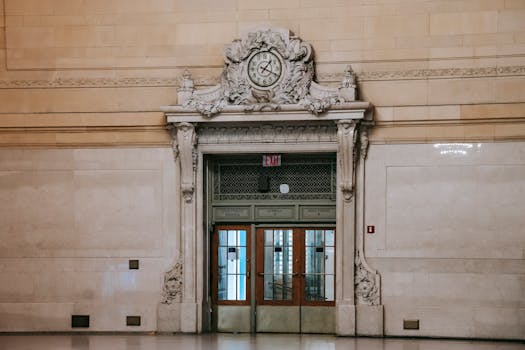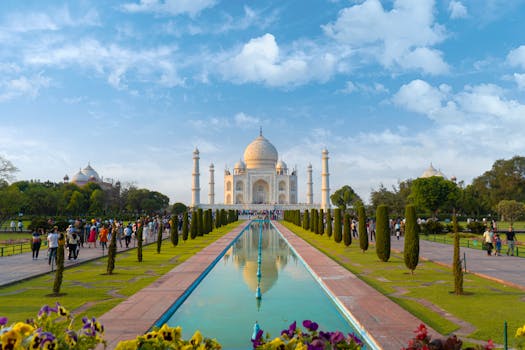
The Golden Ratio and its Existence in Nature
Have you ever heard of the golden ratio? It's an amazing mathematical concept that appears everywhere in nature. The golden ratio is often denoted by the Greek letter phi (φ) and is approximately equal to 1.618. In this blog, we will explore what the golden ratio is, how it occurs in nature, and why it matters to us.
What is the Golden Ratio?
The golden ratio is a special number that has fascinated mathematicians, artists, and scientists for centuries. When you have two numbers, a and b, with a > b, they are in the golden ratio if:
(a + b) / a = a / b = φ
This simple relationship creates a unique proportion that is often associated with beauty and harmony. For example, if you have a rectangle where the longer side divided by the shorter side equals the golden ratio, that rectangle is said to be aesthetically pleasing.
The Golden Ratio in Nature
The golden ratio is not just an abstract concept; it appears in various forms in nature. Let's look at some fascinating examples of how the golden ratio exists in the natural world!
1. The Arrangement of Leaves
One of the best examples of the golden ratio in nature is the arrangement of leaves around a stem. This pattern is known as phyllotaxis. Many plants grow their leaves in a spiral pattern that follows the golden ratio, allowing them to capture the most sunlight possible. For instance, the number of spirals in one direction often corresponds to a Fibonacci number, which is closely linked to the golden ratio.
2. Flower Petals
Have you ever noticed that many flowers have petals arranged in a way that reflects the golden ratio? For example, daisies typically have 34 or 55 petals, both of which are Fibonacci numbers. This pattern helps to optimize space and sunlight exposure, contributing to the flower's health and beauty.
3. Pinecones and Pineapples
Pinecones and pineapples are other examples of natural objects that showcase the golden ratio. If you count the spirals on a pinecone or the segments in a pineapple, you'll often find that the numbers correspond to Fibonacci numbers, creating spirals that adhere to the golden ratio.
4. The Nautilus Shell
The nautilus shell is frequently cited as a perfect example of the golden ratio in nature. As the nautilus grows, its shell forms a logarithmic spiral that reflects the golden ratio. The shell continuously expands, maintaining its proportion and creating a beautiful, natural design.
5. Animal Bodies
The golden ratio can often be seen in the proportions of various animals. Take the human body, for instance. The ratio of the height of a person to the distance from their navel to the floor approximates the golden ratio. Even the way animals' limbs and body parts are proportioned can reflect this stunning mathematical relationship.
Why is the Golden Ratio Important?
Understanding the golden ratio has implications beyond just aesthetic appeal. It has practical applications in art, architecture, and even investment strategies. Here are some reasons why the golden ratio is essential:
1. Growth Patterns
The golden ratio can help us understand how living organisms grow and develop. By studying how plants and animals conform to this ratio, scientists can understand growth patterns, which can aid in conservation and agriculture.
2. Visual Appeal in Art and Design
Artists have used the golden ratio for centuries to create balanced and beautiful works. Famous paintings like the Mona Lisa and the architecture of the Parthenon reflect this principle. Designers also leverage the golden ratio to create appealing websites and graphics.
3. Mathematics and Nature
The golden ratio showcases the connection between mathematics and nature. It serves as a reminder that numerical patterns can explain the complexity of our universe. This relationship sparks curiosity and drives us to explore more about the world we live in.
How to Find the Golden Ratio in Nature
Finding the golden ratio in nature can be both fun and educational. Here are some simple ways to observe it:
1. Observe Plants
Take a walk in nature. Look for flowers, leaves, and trees. Count the petals, observe the arrangement of the leaves, and see if you can identify the golden ratio or Fibonacci numbers in their structures.
2. Watch Animals
Pay attention to the proportions of animals. Notice how their limbs and bodies are shaped. You might find some fascinating instances of the golden ratio in birds, mammals, and other creatures!
3. Explore Shells and Fossils
Collect seashells or look for fossils. Many shells exhibit the logarithmic spiral that embodies the golden ratio. You can also sketch or measure these shells to see their proportions.
Conclusion
The golden ratio is a fascinating concept that reveals itself in countless ways across the natural world. From the way leaves are arranged to the patterns in shells, the golden ratio connects beauty and mathematics in a way that continues to inspire us.
Understanding the golden ratio enhances our appreciation of nature and art while offering insights into the fundamental patterns of life. So next time you're outdoors, take a moment to observe and appreciate how the golden ratio shapes the beauty around us!
FAQs about the Golden Ratio
1. Is the golden ratio found only in nature?
No, the golden ratio can also be found in art, architecture, and even music. It's a principle that many creators utilize to achieve balance and harmony in their works.
2. How can I calculate the golden ratio with numbers?
You can easily calculate the golden ratio using the formula mentioned earlier. Just select two numbers that fit the ratio and figure out their values!
3. Can the golden ratio be used in everyday life?
Yes! The golden ratio can be applied in areas such as design, personal creativity, and even organization. It's a tool that can enhance visual appeal and creativity in daily tasks.

